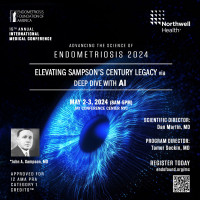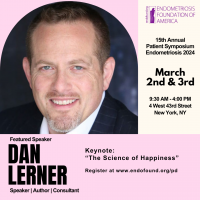
Principal Investigator:
Katherine A. Burns, Ph.D. Assistant Professor Department of Environmental Health University of Cincinnati College of Medicine
Kettering Lab Complex
Key Personnel
Rebecca Jones
Summary
What is DEHP? DEHP is a type of chemical called a phthalate that is found throughout our environment and is an endocrine-disrupting chemical. DEHP and its related chemicals are found in common products from medical grade tubing to flooring, to personal care products. Phthalates are used to make plastics more flexible and are used as dissolving agents for other non-soluble materials. Phthalates are listed under “fragrance” in products like lotions, shampoo, hair products, nail polish, perfume, makeup, and the list goes on. Who is the predominant user of these types of products? WOMEN!!
Both our genes and our environment influence our health and disease. Endometriosis is such a complex disease, as you know well. Recently we published that the early initiation of endometriosis is predominated by the immune system. With neutrophils and macrophages being key cell types. DEHP is also known as an immunotoxicant and can affect the regulation of the immune system. Our ongoing studies are exploring the effect of DEHP on endometriosis and the immune system in a mouse model of endometriosis.
We are continuing to validate that DEHP increases the number of endometriosis lesions that are formed in the peritoneal cavity, that DEHP alters inflammatory signaling in the lesions, and that DEHP also alters normal uterine signaling responses. In the new year (April 2018-March 2019), we will be focusing our studies on the early initiation of endometriosis, analysis of the current long-term experiments that are underway, and examining the chemokine/cytokine released into the peritoneal cavity with the initiation of endometriosis in mice. Excitingly, with other projects ongoing in the laboratory, we have been successful in establishing primary cell cultures from lesions removed from mice (picture below). We have multiple cell types, but in culture, these cells from lesions in culture. We are very excited to continue this work and incorporate phthalate exposure for analysis. We anticipate this will give us a clearer picture of how phthalates are contributing to the severity of endometriosis more so than examining a single monoculture of cells.
Bio
 Dr. Katherine (Katie) Burns is an Assistant Professor at the University of Cincinnati College of Medicine in the Department of Environmental Health. She earned her PhD from the Pennsylvania State University in Pathobiology with a concentration in Toxicology. Dr. Burns did her postdoctoral research at the National Institute for Environmental Health Sciences where she used a mouse model of endometriosis that recapitulates retrograde menstruation to study the roles of estrogen receptors in endometriosis. The Burns Laboratory studies how the immune system and interaction with endocrine disrupting chemicals contribute to or exacerbate endometriosis. Dr. Burns is also an endometriosis patient. During her 5th surgery, she was a subject in a clinical trial. At that point, as a PhD student, she saw the clinical and translational aspect of endometriosis and knew her future career direction. Her goal is to contribute to endometriosis research with the hope that girls become healthy reproductively competent women.
Dr. Katherine (Katie) Burns is an Assistant Professor at the University of Cincinnati College of Medicine in the Department of Environmental Health. She earned her PhD from the Pennsylvania State University in Pathobiology with a concentration in Toxicology. Dr. Burns did her postdoctoral research at the National Institute for Environmental Health Sciences where she used a mouse model of endometriosis that recapitulates retrograde menstruation to study the roles of estrogen receptors in endometriosis. The Burns Laboratory studies how the immune system and interaction with endocrine disrupting chemicals contribute to or exacerbate endometriosis. Dr. Burns is also an endometriosis patient. During her 5th surgery, she was a subject in a clinical trial. At that point, as a PhD student, she saw the clinical and translational aspect of endometriosis and knew her future career direction. Her goal is to contribute to endometriosis research with the hope that girls become healthy reproductively competent women.









